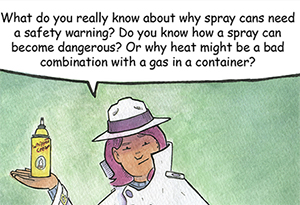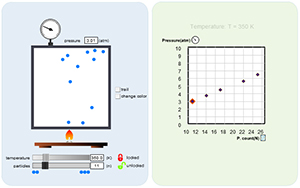The Molecules & Minds simulations are designed to help you to learn about kinetic molecular theory through exploration and discovery.
What can I learn about using these simulations?

You can begin to develop a better understanding of kinetic molecular theory (KMT), which deals with how particles behave at the atomic level, by using the Molecules & Minds simulations. Using them will help you understand and explain how matter acts in the world you observe.
What are models and simulations?

A model is a way of understanding a system in a simplified way. In science they are often mathematical, like equations used to describe howgravity affects orbiting planets, or they can be simplified systems, like an aquarium representing an ecosystem. Models are created in order to help us understand and explore real systems more simply becausethey allow us to limit the variables that we explore. A simulation is an observable and often interactive representation of a model.
Why use a simulation when I investigate KMT?

The simulation will allow you to learn the basics of kinetic molecular theory by seeing and exploring rather than just memorizing.
What other questions will understanding KMT help me answer?

- Why do my bike tires get squishy when it gets cold?
- Why does a pot of boiling water stay the same temperature even though we keep heating it?
- Why does a cake mix have special instructions for high altitudes?
- Why shouldn’t I leave a spray can in the car on a hot day?
- How does desalination work?
What are my options?
From the simulations page you can explore four different simulations – kinetic molecular theory, diffusion, the gas laws, and phase change.